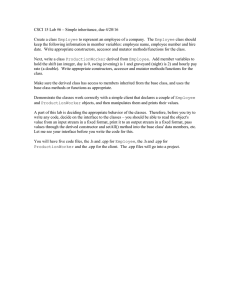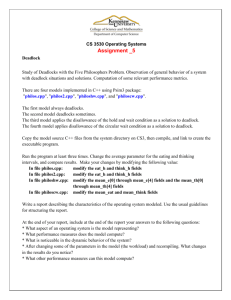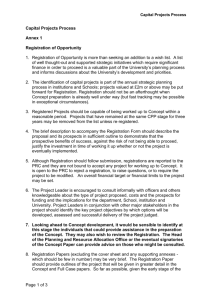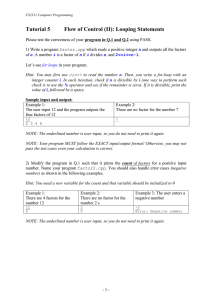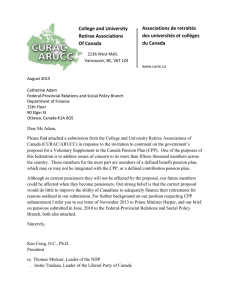After 155 Years, A Crystalline Chromium Carboxylate with a Supershort Cr
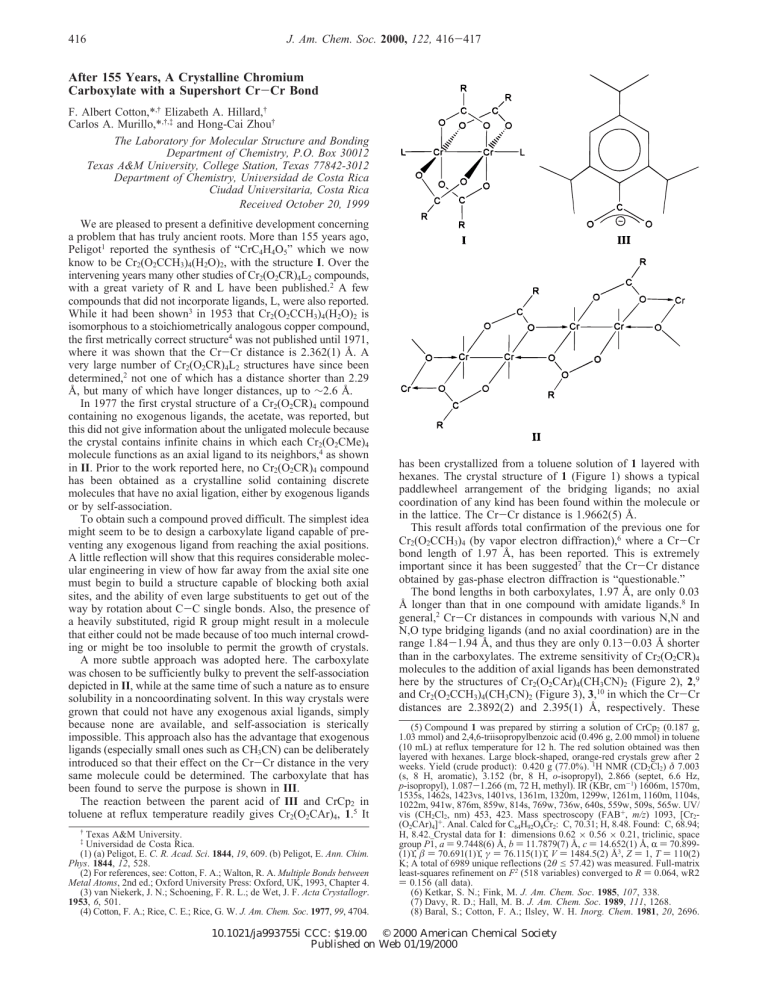
416 J. Am. Chem. Soc. 2000, 122, 416
-
417
After 155 Years, A Crystalline Chromium
Carboxylate with a Supershort Cr
-
Cr Bond
F. Albert Cotton,* ,† Elizabeth A. Hillard, †
Carlos A. Murillo,* ,†,‡ and Hong-Cai Zhou †
The Laboratory for Molecular Structure and Bonding
Texas A&M Uni
Department of Chemistry, P.O. Box 30012
V ersity, College Station, Texas 77842-3012
Department of Chemistry, Uni
V
Ciudad Uni ersidad de Costa Rica
V ersitaria, Costa Rica
Recei
V ed October 20, 1999
We are pleased to present a definitive development concerning a problem that has truly ancient roots. More than 155 years ago,
Peligot 1 reported the synthesis of “CrC
4
H
4
O
5
” which we now know to be Cr
2
(O
2
CCH
3
)
4
(H
2
O)
2
, with the structure I. Over the intervening years many other studies of Cr
2
(O
2
CR)
4
L
2 compounds, with a great variety of R and L have been published.
2 A few compounds that did not incorporate ligands, L, were also reported.
While it had been shown 3 in 1953 that Cr
2
(O
2
CCH
3
)
4
(H
2
O)
2 is isomorphous to a stoichiometrically analogous copper compound, the first metrically correct structure 4 was not published until 1971, where it was shown that the Cr
-
Cr distance is 2.362(1) Å. A very large number of Cr
2
(O
2
CR)
4
L
2 structures have since been determined, 2 not one of which has a distance shorter than 2.29
Å, but many of which have longer distances, up to ∼ 2.6 Å.
In 1977 the first crystal structure of a Cr
2
(O
2
CR)
4 compound containing no exogenous ligands, the acetate, was reported, but this did not give information about the unligated molecule because the crystal contains infinite chains in which each Cr
2
(O
2
CMe) molecule functions as an axial ligand to its neighbors, 4 as shown
4 in II. Prior to the work reported here, no Cr
2
(O
2
CR)
4 compound has been obtained as a crystalline solid containing discrete molecules that have no axial ligation, either by exogenous ligands or by self-association.
To obtain such a compound proved difficult. The simplest idea might seem to be to design a carboxylate ligand capable of preventing any exogenous ligand from reaching the axial positions.
A little reflection will show that this requires considerable molecular engineering in view of how far away from the axial site one must begin to build a structure capable of blocking both axial sites, and the ability of even large substituents to get out of the way by rotation about C
-
C single bonds. Also, the presence of a heavily substituted, rigid R group might result in a molecule that either could not be made because of too much internal crowding or might be too insoluble to permit the growth of crystals.
A more subtle approach was adopted here. The carboxylate was chosen to be sufficiently bulky to prevent the self-association depicted in II, while at the same time of such a nature as to ensure solubility in a noncoordinating solvent. In this way crystals were grown that could not have any exogenous axial ligands, simply because none are available, and self-association is sterically impossible. This approach also has the advantage that exogenous ligands (especially small ones such as CH
3
CN) can be deliberately introduced so that their effect on the Cr
-
Cr distance in the very same molecule could be determined. The carboxylate that has been found to serve the purpose is shown in III.
The reaction between the parent acid of III and CrCp
2 toluene at reflux temperature readily gives Cr
2
(O
2
CAr)
4
, 1.
5 in
It
†
‡
Texas A&M University.
Universidad de Costa Rica.
(1) (a) Peligot, E. C. R. Acad. Sci. 1844, 19, 609. (b) Peligot, E. Ann. Chim.
Phys. 1844, 12, 528.
(2) For references, see: Cotton, F. A.; Walton, R. A. Multiple Bonds between
Metal Atoms, 2nd ed.; Oxford University Press: Oxford, UK, 1993, Chapter 4.
(3) van Niekerk, J. N.; Schoening, F. R. L.; de Wet, J. F. Acta Crystallogr.
1953, 6, 501.
(4) Cotton, F. A.; Rice, C. E.; Rice, G. W. J. Am. Chem. Soc. 1977, 99, 4704.
has been crystallized from a toluene solution of 1 layered with hexanes. The crystal structure of 1 (Figure 1) shows a typical paddlewheel arrangement of the bridging ligands; no axial coordination of any kind has been found within the molecule or in the lattice. The Cr
-
Cr distance is 1.9662(5) Å.
Cr
2
This result affords total confirmation of the previous one for
(O
2
CCH
3
)
4
(by vapor electron diffraction), 6 where a Cr
-
Cr bond length of 1.97 Å, has been reported. This is extremely important since it has been suggested 7 that the Cr
-
Cr distance obtained by gas-phase electron diffraction is “questionable.”
The bond lengths in both carboxylates, 1.97 Å, are only 0.03
Å longer than that in one compound with amidate ligands.
8 general, 2 Cr
-
In
Cr distances in compounds with various N,N and
N,O type bridging ligands (and no axial coordination) are in the range 1.84
-
1.94 Å, and thus they are only 0.13
-
0.03 Å shorter than in the carboxylates. The extreme sensitivity of Cr
2
(O
2
CR)
4 molecules to the addition of axial ligands has been demonstrated here by the structures of Cr
2 and Cr
2
(O
2
CCH
3
)
4
(CH
3
CN)
2
(O
2
CAr)
4
(CH
3
(Figure 3), 3, 10
CN)
2
(Figure 2), 2, 9 in which the Cr
-
Cr distances are 2.3892(2) and 2.395(1) Å, respectively. These
(5) Compound 1 was prepared by stirring a solution of CrCp
2
(0.187 g,
1.03 mmol) and 2,4,6-triisopropylbenzoic acid (0.496 g, 2.00 mmol) in toluene
(10 mL) at reflux temperature for 12 h. The red solution obtained was then layered with hexanes. Large block-shaped, orange-red crystals grew after 2 weeks. Yield (crude product): 0.420 g (77.0%).
1 H NMR (CD
2
Cl
2
) δ 7.003
(s, 8 H, aromatic), 3.152 (br, 8 H, o-isopropyl), 2.866 (septet, 6.6 Hz,
p-isopropyl), 1.087
-
1.266 (m, 72 H, methyl). IR (KBr, cm
-
1 ) 1606m, 1570m,
1535s, 1462s, 1423vs, 1401vs, 1361m, 1320m, 1299w, 1261m, 1160m, 1104s,
1022m, 941w, 876m, 859w, 814s, 769w, 736w, 640s, 559w, 509s, 565w. UV/ vis (CH
(O
2
CAr)
2
4
Cl
]
+
2
, nm) 453, 423. Mass spectroscopy (FAB
. Anal. Calcd for C
64
H
92
O
8
Cr
2
+
, m/z) 1093, [Cr
2
-
: C, 70.31; H, 8.48. Found: C, 68.94;
H, 8.42. Crystal data for 1: dimensions 0.62
×
0.56
×
0.21, triclinic, space group P1 , a
)
9.7448(6) Å, b
)
11.7879(7) Å, c
)
14.652(1) Å,
R )
70.899-
(1)
°
, β
)
70.691(1)
°
, γ
)
76.115(1)
°
, V
)
1484.5(2) Å 3 , Z
)
1, T
)
110(2)
K; A total of 6989 unique reflections (2 θ e
57.42) was measured. Full-matrix least-squares refinement on F 2 (518 variables) converged to R
)
0.064, wR2
)
0.156 (all data).
(6) Ketkar, S. N.; Fink, M. J. Am. Chem. Soc. 1985, 107, 338.
(7) Davy, R. D.; Hall, M. B. J. Am. Chem. Soc. 1989, 111, 1268.
(8) Baral, S.; Cotton, F. A.; Ilsley, W. H. Inorg. Chem. 1981, 20, 2696.
10.1021/ja993755i CCC: $19.00
© 2000 American Chemical Society
Published on Web 01/19/2000
Communications to the Editor J. Am. Chem. Soc., Vol. 122, No. 2, 2000 417
Figure 1. Cr
2
(O
2
CAr)
4 molecule. Thermal ellipsoids shown at 50% probability level; hydrogen atoms omitted for clarity.
Figure 2. Cr
2
(O
2
CAr)
4
(CH
3
CN)
2 molecule. Thermal ellipsoids shown at 50% probability level; carbon atoms for the core atoms are given on an arbitrary scale, and hydrogen atoms are omitted for clarity. Only one of the two orientations of the disordered molecule is shown.
relationships may be compared with some contrary theoretical predictions to be discussed below.
There have been several theoretical studies addressing the
4 nature of Cr s
Cr bonds, but only those 7,11
-
13 dealing directly with the question of how the bond length is affected by the
(9) Compound 2 was prepared by layering a solution of 1 in CH
2
Cl
2 with
CH
3
CN. Upon diffusion the solution color changed from yellow to pink. Large block-shaped red crystals of 2
‚ data: dimensions 0.46
(2) Å, b
γ
)
)
×
16.618(2) Å, c
0.41
)
1.5(CH
×
2
Cl
2
17.529(2) Å,
) were obtained in 2 days. Crystal
0.39, triclinic, space group P1
R )
65.918(2)
°
, β
, a
)
)
14.445-
74.912(2)
°
82.713(3)
°
, V
)
3708.1(9) Å 3 , Z
)
2, T
)
213(2) K; A total of 9653 unique reflections (2 θ e
45) was measured. All isopropyl groups except one
, and one phenyl ring are disordered and were refined successfully as superposition of two orientations for each disordered part. Full-matrix least-squares refinement on F 2 (698 variables) converged to R
)
0.119, wR2
)
0.302 (all data).
hot CH at
(10) Compound 3 was prepared by dissolving Cr
2
(O
2
CCH
3
)
4
-
20
(4) Å 3
3
°
, Z
CN. The saturated red solution was then allowed to stand in a freezer
C for 2 days, giving block-shaped red crystals of 3
‚
2CH data: dimensions 0.36
×
0.28
×
0.26, monoclinic, space group P2
10.701(2) Å, b
)
)
2, T
10.206(2) Å, c
)
) ) was measured. Full-matrix least-squares refinement on F converged to R
)
0.069, wR2
)
0.169 (all data).
2 powder in
3
CN. Crystal
10.912(2) Å, β 101.978(4)
°
, V
)
1
/n, a
)
1165.8-
213(2) K; A total of 2710 unique reflections (2 θ e
56.94)
(143 variables)
(11) Wiest, R.; Be´nard, M. Chem. Phys. Lett. 1983, 98, 102.
(12) Kok, R. A.; Hall, M. B. J. Am. Chem. Soc. 1983, 105, 676.
(13) Kok, R. A.; Hall, M. B. Inorg. Chem. 1985, 24, 1542.
Figure 3. Cr
2
(O
2
CCH
3
)
4
(CH
3
CN)
2 molecule. Thermal ellipsoids shown at 50% probability level; hydrogen atoms are shown at an arbitrary scale.
bridging and axial ligands will be discussed here. As a result of these calculations, there arose a theoretical consensus that, while axial ligands played an important role, the bridging ligands were also of major importance. This view was stated as follows: (1)
“the effect of bridging ligands is at least as important as the observed influence of axial coordination...” 11 This conclusion was drawn from the results of ab initio calculations on Cr
2 and Cr
2
(O
2
CH)
4 which gave Cr
-
(NHCHO)
Cr bond distances of 1.92 and
4
2.53 Å, respectively. Similarly, for the formato species, Cr
2
-
(O
2
CH)
4
, other calculations 12 gave a prediction of 2.4 Å for the
Cr
-
Cr bond length. Still another theoretical study 13 led to the conclusion “that the nature of the bridging ligand strongly affects the electronic structure of the quadruple bond” and that there should be “a bond shortening of 0.48 Å when the formato ligands are replaced by amino iminato ligands.” In still another study 7 was proposed that the Cr compounds, Cr
2
(O
2
CR)
4
it
Cr distance in tetracarboxylate
, would be in the range of 2.05
-
2.10 Å and that, as already noted, the experimental value of 1.97 Å for gaseous Cr
2
(O
2
CCH
3
)
4 is “questionable.”
Clearly, all of these dichromium molecules, and especially the
Cr
2
(O
2
CR)
4 molecules, have so far defied successful theoretical treatment. Now we have structural results that cannot possibly be considered questionable, and they show that while the introduction of axial coordination can make a huge change (ca.
0.4 Å) in the Cr
-
Cr distance, a change from an N,N or N,O bridging ligand to an O,O bridging ligands causes a much smaller change, viz., 0.13 Å at most.
The question of how a chromium-to-chromium quadruple bond is influenced by its surrounding ligands is important because (a) no other bond known in chemistry shows anywhere near as great
4 sensivity to such influences, and (b) in several cases Cr s
Cr bonds are shorter than any other known bond relative to the size of the atoms making it up.
14
The great advantage of having this crystalline form of a compound with unligated Cr
2
(O
2
CR)
4 molecules is that other important measurements can now be made which cannot be made on the vapor of Cr
2
(O
2
CCH
3
)
4
. Among these might be an electron density map using low-temperature crystallography, which is already in progress, and the polarized visible absorption spectrum, which will be particularly convenient in this case because all Cr
-
Cr units are parallel throughout the crystal.
Acknowledgment. We thank the National Science Foundation and the Robert A. Welch Foundation for financial support, and Dr. Lee M.
Daniels for crystallographic assistance.
Supporting Information Available: Tables of crystallographic data including diffractometer and refinement data, atomic coordinates, bond lengths, bond angles, and anisotropic displacement parameters (PDF) and an X-ray crystallographic file, in CIF format. This material is available free of charge via the Internet at http://pubs.acs.org.
JA993755I
(14) Reference 2, p 277.
